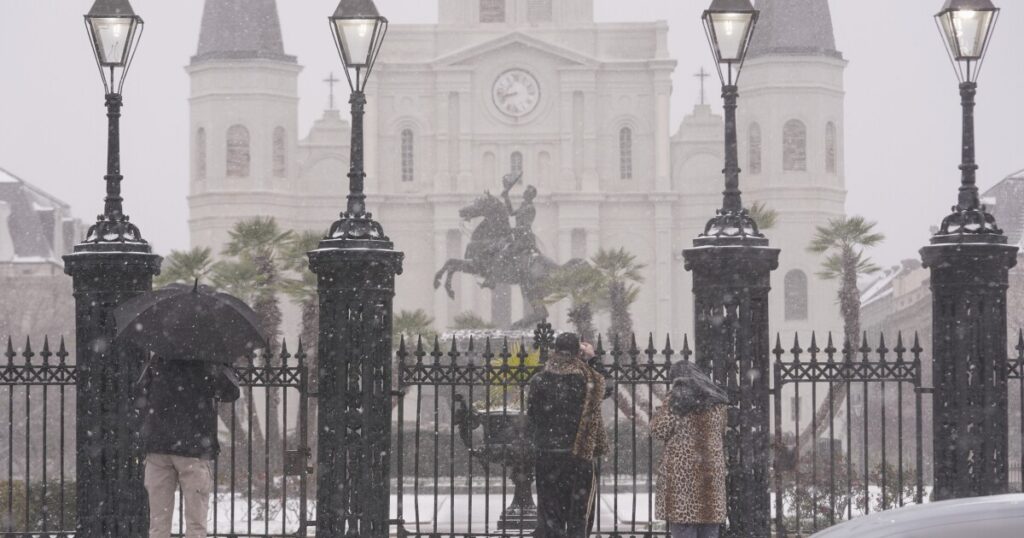In an unusual weather twist, a significant snowstorm recently descended upon the Greater New Orleans area, leaving behind up to 11.5 inches of snow, and likely setting new snowfall records for the region.
Barry Keim, a climatologist, draws parallels between this storm and a notable snow event in 1895, attributing both to a rare combination of meteorological conditions, primarily prolonged cold temperatures brought by the “polar vortex” from the Arctic.
The “polar vortex” is a persistent zone of cold air and low pressure encircling the Earth’s poles. Keim explains, “Anytime we get an Arctic air blast down this far south, this is an artifact of the polar vortex rearing its ugly head.”
New Orleans and Baton Rouge residents awoke Tuesday morning to a landscape transformed by an unusual blanket of snow.
While November and December have trended warmer than usual in Louisiana, this week brought record-low temperatures. Despite the global warming trend, Keim notes that extreme cold snaps, like this one, can still occur.
Keim acknowledges the difficulty in linking such Gulf Coast winter storms to climate change, despite his research supporting broader warming trends. He states, “This is a great example that, yes, the atmosphere can still wind itself up and throw some pretty interesting, unusual and cold events at us on occasion.”
Many climate scientists suggest these cold spells might be anomalies, yet there is ongoing research into how global warming might affect the polar vortex. Some theories propose that warming poles and melting ice may destabilize the vortex, leading to more frequent cold air incursions into North America.
Amy Butler, from the National Oceanic and Atmospheric Administration, points out the uncertainty in predicting long-term changes to the polar vortex due to limited historical data. She mentions that observed changes might simply be natural variations.
Tuesday’s rare winter storm left the Deep South, including parts of Louisiana, Texas, and Mississippi, covered in snow, with some areas reporting over 9 inches.
Butler and other experts agree that while these cold extremes may become less frequent, they will still occur and might pose greater challenges due to decreasing societal preparedness. “It will be harder for society to deal with because we become unaccustomed to dealing with this type of cold,” Butler notes.
The 2021 study on this topic highlights the need for preparedness for such rare winter events to mitigate economic and human costs. The rapid warming of the Arctic last year, which has led to it releasing more carbon than it stores, raises concerns about potential impacts on global climate and weather patterns. Researchers continue to study these changes to understand their broader implications.
Original Story at www.wwno.org
